Customs of Mexico’s Day of the Dead, Rooted in Mesoamerica While Embracing Catholicism

What is Mexico’s Day of the Dead?
Mexico’s “Day of the Dead” (Día de los Muertos) was inscribed as UNESCO’s Intangible Cultural Heritage in 2008. In addition, Michoacán’s regional cuisine and Mariachi music are also registered as Intangible Cultural Heritage. Mexico offers more than just pyramids and beaches! (laughs)
The Day of the Dead in Mexico shares many similarities with Japan’s Obon customs, as families gather and visit graves. This tradition blends a belief in the creation of new life (spring sprouting) from the pre-existing belief in “death” as the harvest of autumn. The fusion of these beliefs and customs with European Catholic culture, introduced by the Spanish during colonial times, gave birth to Mexico’s Day of the Dead.
Before the influence of Spanish culture in 1521, the people had their unique calendar aligned with the harvest season of crops. The end of this calendar, symbolizing the harvest or “death,” falls in the present month of October. In contrast, November 1st is All Saints’ Day in Catholic culture, but in Mexico, it is the “Day of the Child’s Deceased.” November 2nd is the “Day of the Dead,” dedicated to welcoming the deceased adults. The customs from the Mesoamerican era were adapted by the Spanish to coincide with the Catholic calendar, and in Mexico, they are celebrated as the “Day of the Dead” during this period. Furthermore, in some regions, October 28th is a day to remember those who died in accidents or disasters, and October 30th is observed as the “Day of the Deceased Children” for those who were not baptized.

Traditionally, to ensure that the deceased can find their way back home easily, families create altars inside their homes. They place photographs from their loved ones’ lives and favorite dishes in containers, signifying that they will receive nourishment before returning to the other world. These offerings are placed on the altar alongside candles and Cempasúchil (Marigold) flowers, creating a path for the souls to be welcomed. While the tradition of the Marigold road is said to have begun during colonial times…
On November 1st, families typically visit the graves and clean them while offering flowers. They then have a meal and sometimes enjoy singing along with live performances like Mariachi, spending a festive night together with the deceased. It’s as if they are celebrating a festival, a day to cherish the beloved deceased as if they were resurrected.
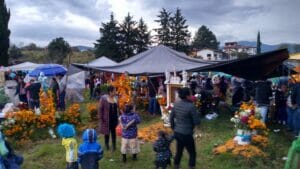
Not only is this tradition cherished and passed down through generations, but it is also believed that how the deceased are welcomed and spend time together on this day determines whether prosperity or misfortune will be brought upon the living.
Once the deceased have returned to the other world, the offerings on the altar are enjoyed by the gathered family, and the Day of the Dead comes to an end.
By the way, Oaxaca is famous for its Day of the Dead customs, but the original origin of the modern version of the Day of the Dead lies in the area around Pátzcuaro in the state of Michoacán. It began with the support of President Lázaro Cárdenas at the time and has been passed down as a “model” for the Day of the Dead in Mexico until today.
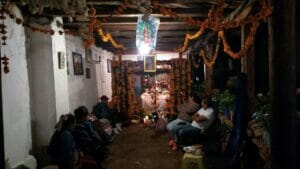
The Depth of the “Day of the Dead”
When considering the modern “Day of the Dead” (Día de los Muertos) in Mexico, it is necessary to understand a bit of Mexico’s history. However, unraveling the culture and history that underlie today’s Mexico is no easy task. What we see in present-day Mexico is a fusion of three distinct cultures.
For example, the tourist site (Tlatelolco) referred to as “Plaza de las Tres Culturas” in Japanese guidebooks is an example of this. The first culture is the pre-conquest culture known as the Mexica Empire, which was conquered by the Spanish in 1521. The second culture is the Spanish colonial period that followed, lasting for 300 years. The third culture is the one that emerged after Mexico gained independence from Spain in 1821, in other words, the culture of Mexico as a nation.
Even if we look only at the pre-colonial Mesoamerican era, many ethnic groups and tribes, including the famous Maya and Mexica (Aztec), as well as Teotihuacan, Purepecha, Mixtec, Totonac, Zapotec, Tlaxcaltec, and others, existed in abundance. These diverse cultures were destroyed under the pretext of evangelization by the Spanish, forcing a fundamental transformation of the identity of the people of that time. For them, it was an event that turned the heavens and the earth upside down. Considering just this aspect, it becomes clear how challenging it is to identify the roots of modern Mexico.
The people of present-day Mexico have inherited, for at least 500 years, some of the customs that revere the “dead” as a symbol of the corn harvest (the main staple food) and the birth of new life during this particular time of the year, regardless of the lost elements and their feelings towards the Spanish.
“Day of the Dead” and Halloween are Different
In recent years, there have been many movies set in Mexico, such as 007 Spectre, Coco (Remember Me), and Roma.
Some of you might associate it with Halloween and costume parades. Some of our customers have expressed their desire to participate in costume parades. Of course, it’s great to enjoy the local culture during your overseas travel. However, it’s essential not to forget to understand the background. Doing so will help you recognize that Mexico’s Day of the Dead and Halloween are different.
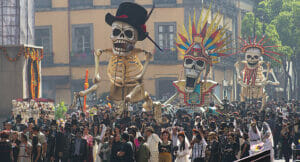
Let us introduce you to the locations featured in 007 Spectre
If you are interested in movies, we can guide you to the filming locations. For example, this scene from 007 Spectre:



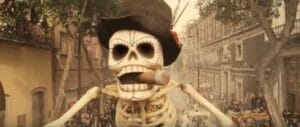
The True Identity of the Skeleton
Costume parades and similar activities have become popular among tourists, but they are not traditional events. Originally, they were a satirical representation of the people of Mexico adopting a European way of life and criticizing and mocking the government. Few people are aware that these caricatures of “Catrina” (the skeleton lady) are the origins of these parades.
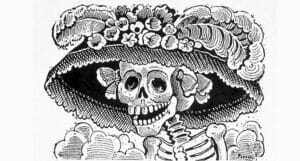
Visit Graves with Respect
In recent years, many tourists, including foreigners, visit Oaxaca mainly to witness the Day of the Dead celebrations. While it is essential to showcase Mexican culture, it’s essential to remember that cemeteries are not tourist attractions. The locals generously allow us to observe and experience their traditions and customs during this time. If you were to drink alcohol and make noise at a cemetery in Japan, it would immediately be considered disrespectful.
We Can Take You to Oaxaca and Michoacán
Since this is a busy time, please contact us with enough time in advance.
I will guide you on a first-come, first-served basis (based on payment), and then my Mexican guide will accompany you in English.
The preparations and planning will be handled in Japanese by me, so you can rest assured.
Photo Gallery
COCO – The Land of Michoacán’s Day of the Dead
Explore the enchanting settings of the movie “Coco” (Remember Me) that take place in Michoacán, the heart of Mexico’s Day of the Dead celebrations.
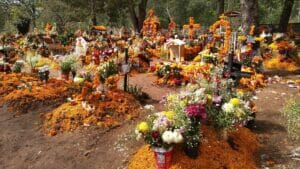
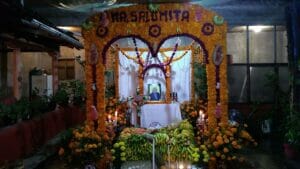
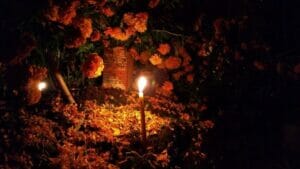
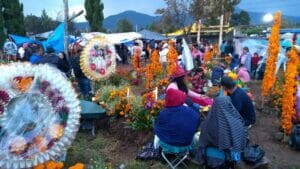
Experience the Day of the Dead in a Mexican Household and Cemetery
Witness the touching traditions of a Mexican family as they prepare their home altar and visit a local cemetery to spend time with their deceased loved ones.

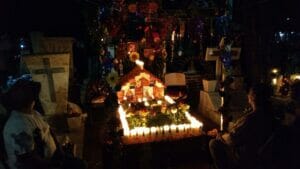
The Origin of the Altar and the Flowers of the Day of the Dead
Discover the roots of the altar tradition and the significance of the Cempasúchil (Marigold) flowers in Mexico’s Day of the Dead festivities.
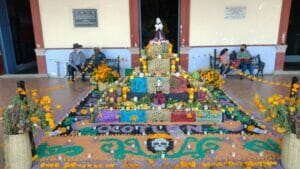

Please note: During holidays, the highways may experience heavy traffic, causing longer travel times. We appreciate your understanding.
Perfect for the Following Travelers!
- Those who want to experience the authentic “face of Mexico.”
- Travelers who wish to turn their “travel time” into “discovery time.”
- Those who find standard tours lacking in depth.
- Ladies’ group travelers.
- Those seeking a unique and special trip to Mexico.
- Culture and nature enthusiasts.
- Seniors or individuals with physical limitations who want to fully enjoy Mexico.
- People of all ages who are curious and open to new experiences.
- Small groups looking for a memorable journey (graduation trips, birthdays, wedding anniversaries, sixtieth birthday celebrations, acts of filial piety, etc.).
We welcome travelers of all types, not just those mentioned above!